The journey to Brazil somehow came up almost accidentally. At some point, I received information about promotional air fares and there in the offer I noticed Rio de Janeiro, so I thought this was not a bad idea at all. I checked the fares and saw they were really quite decent. The next step was to send a message to my friend Snezana with a brief question: “Would you like to go to Brazil in January?” She wrote back within half an hour and although she told me I was completely mad, the important thing was that she said she would. That’s why I love my friend. We are alike.
Later during the autumn that was intensively filled up with work, I barely managed to find the time to figure out the route and book what I could, so at the very beginning of 2019 we were finally ready. This was the plan:
We left Belgrade that was cold, but without snow at the time. It had snowed before our departure and also a few days after by which time the two of us were already in the hot, humid and mostly sunny Rio.
So, our first destination was Rio de Janeiro. With the prior experience concerning winter vacations in the tropics, we had different layers of clothes, so already before leaving the aircraft we took off the surplus clothes putting it into our small backpacks. Still, in addition to the heat, it was also very humid in Rio and that created a rather unpleasant feeling of being sticky. We mostly felt this when we got to our hotel, leaving our luggage at the reception since our room was still not ready, and went out for a short walk.
When I was choosing hotel, I agreed with Sneza to book one of the numerous hotels in the direct proximity of Copacabana Beach. This one was but some 30 metres or so away from a wide street that runs parallel to this famous beach. Although a hotel of the same category in the centre of Rio would be literally half the price, we both agreed that we were in Rio this time and maybe never again, so we felt it worth to give ourselves the treat.
Having left the hotel, we walked to a nearby fortress that is located on the south end of the beach and there we sat in a café in order to get something that would refresh us. Although we had slept relatively fine and comparatively long enough in the plane, the nature of flying, the change of the climate and the unnaturally spent night after all made us both feel a little wobbly.

Still, we took a short walk along the promontory taken up by the fortress. That gave us a chance to start getting to know our surroundings a little.
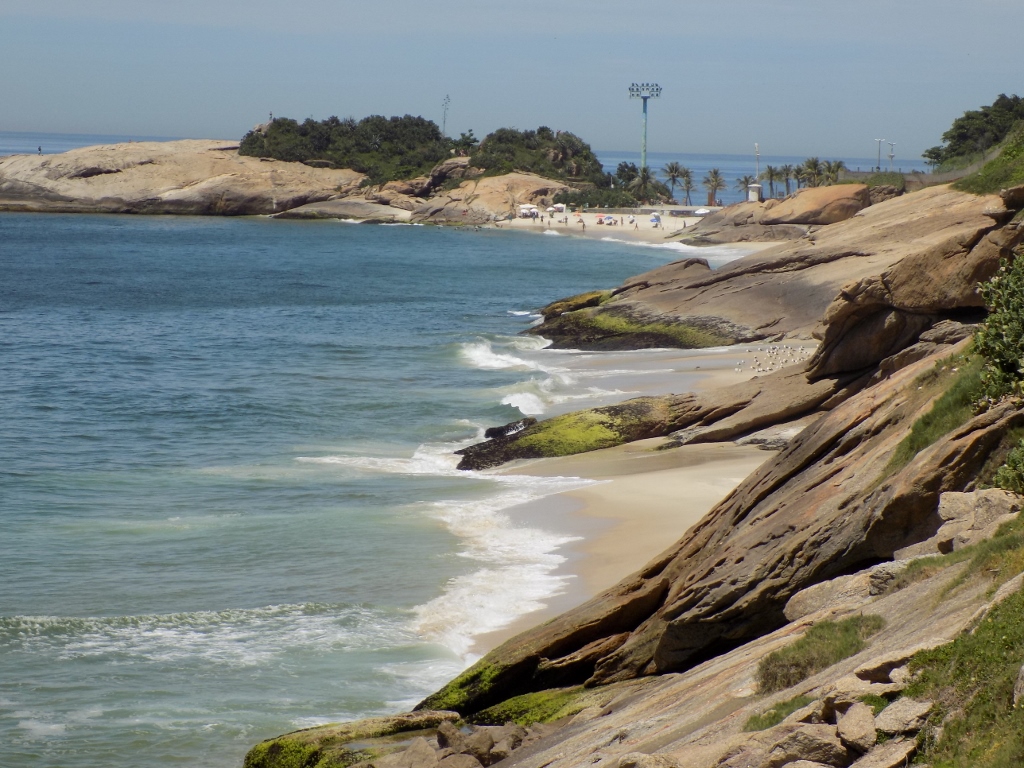 A part of the shore that separates Copacabana and Ipanema
A part of the shore that separates Copacabana and Ipanema
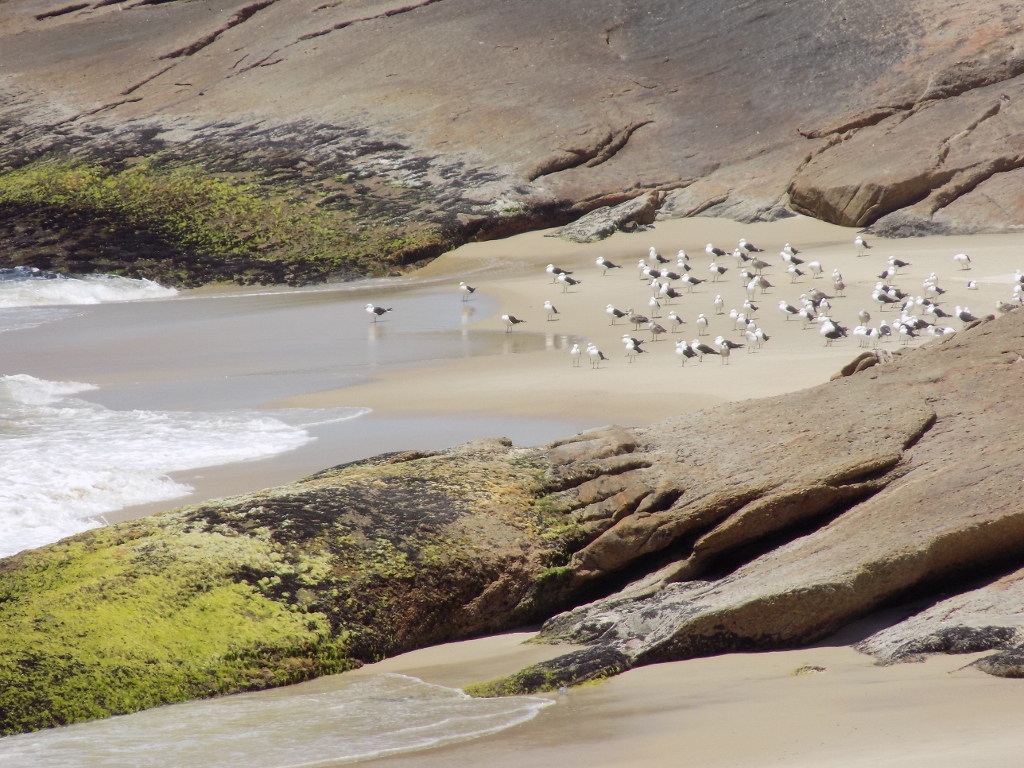 Sea-gulls on the shore that separates Copacabana and Ipanema
Sea-gulls on the shore that separates Copacabana and Ipanema
From there, we often looked towards Copacabana Beach which shares its name with the part of the city that extends by the beach and there is a large number of high-rises that seem nice and well maintained. Still, it was interesting to see also one of the numerous “informal settlements,” favelas, that spreads along the hill in the background of this part of the city.
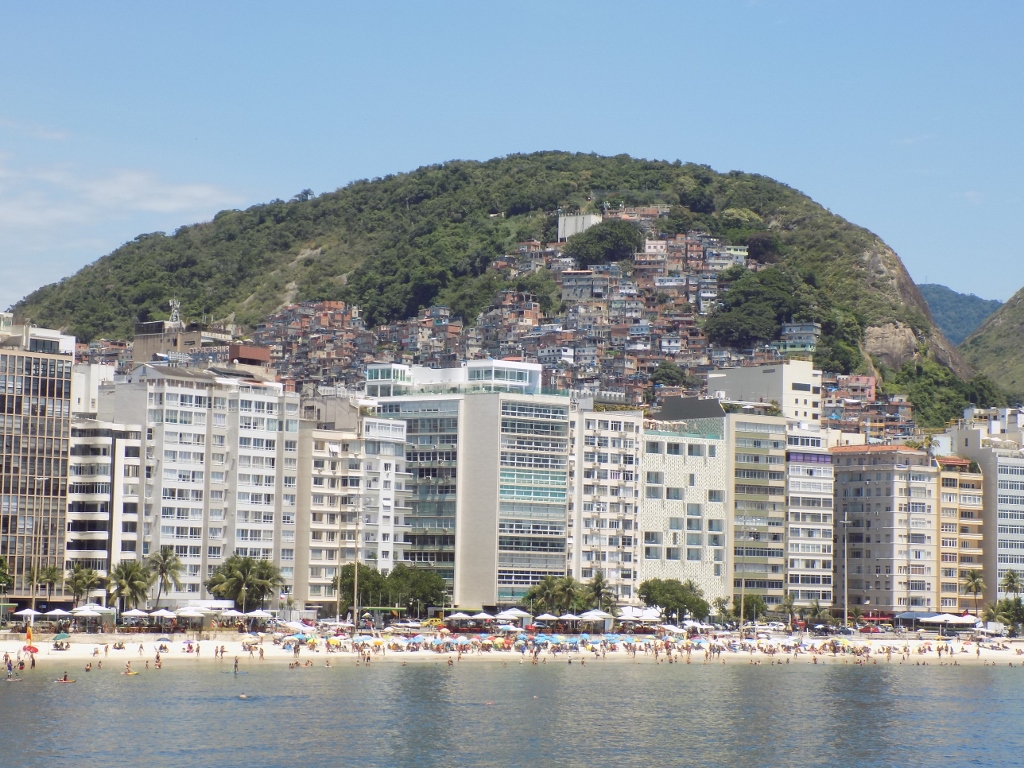 Copacabana, the well maintained, wealthy buildings and a favela in their background
Copacabana, the well maintained, wealthy buildings and a favela in their background
When we settled in our room, although it seemed so easy just to lie down and fall asleep, we decided to take a shower and change into proper summer clothes, and then we took a taxi to the Botanical Garden. We wanted to visit something even on our first day, but we decided to make sure this was easy going and as pleasant as possible. The walk around the Botanical Garden, full of greenery and shade, fitted perfectly into our wishes.
Among other things, we went to see the orchidarium, a pavilion in which they grow different orchids and it was truly fantastic. One can’t help feeling breathless in front of so much beauty. Just have a look at a few photos...
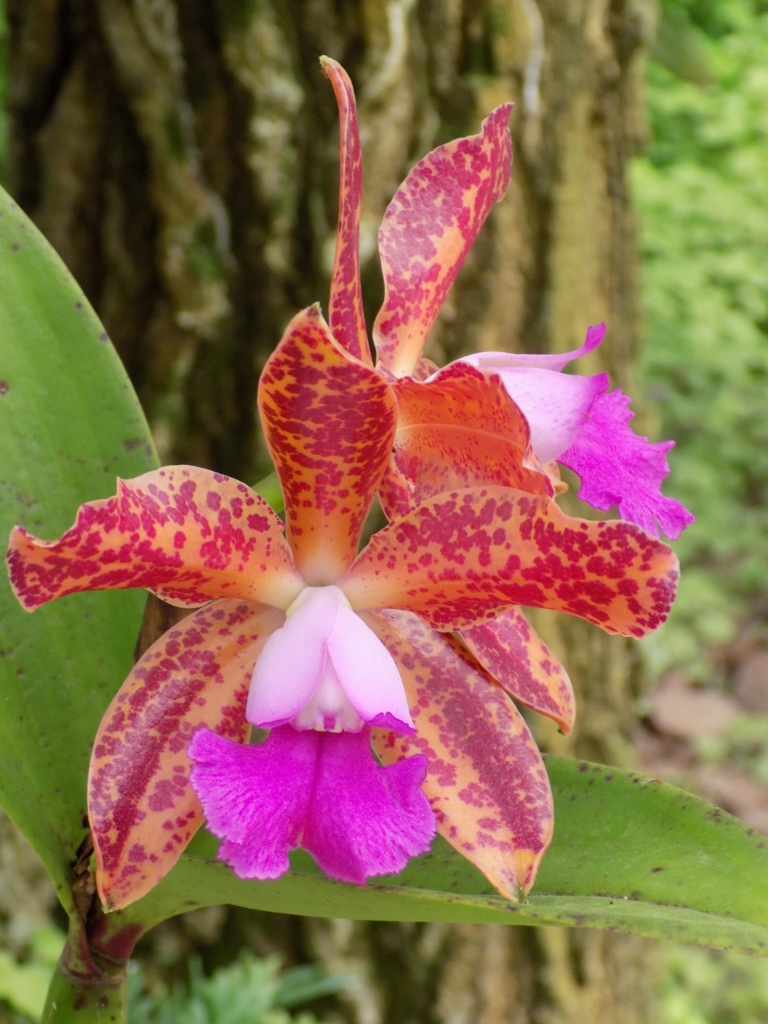 An orchid from the Botanical Garden in Rio
An orchid from the Botanical Garden in Rio
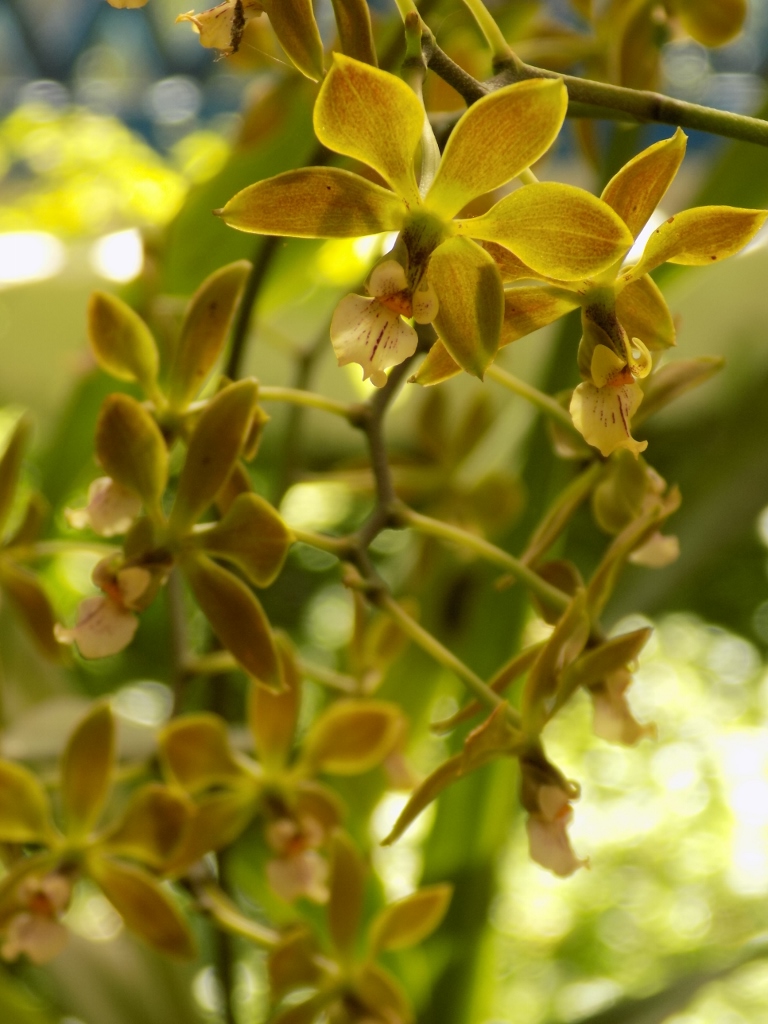 An orchid from the Botanical Garden in Rio
An orchid from the Botanical Garden in Rio
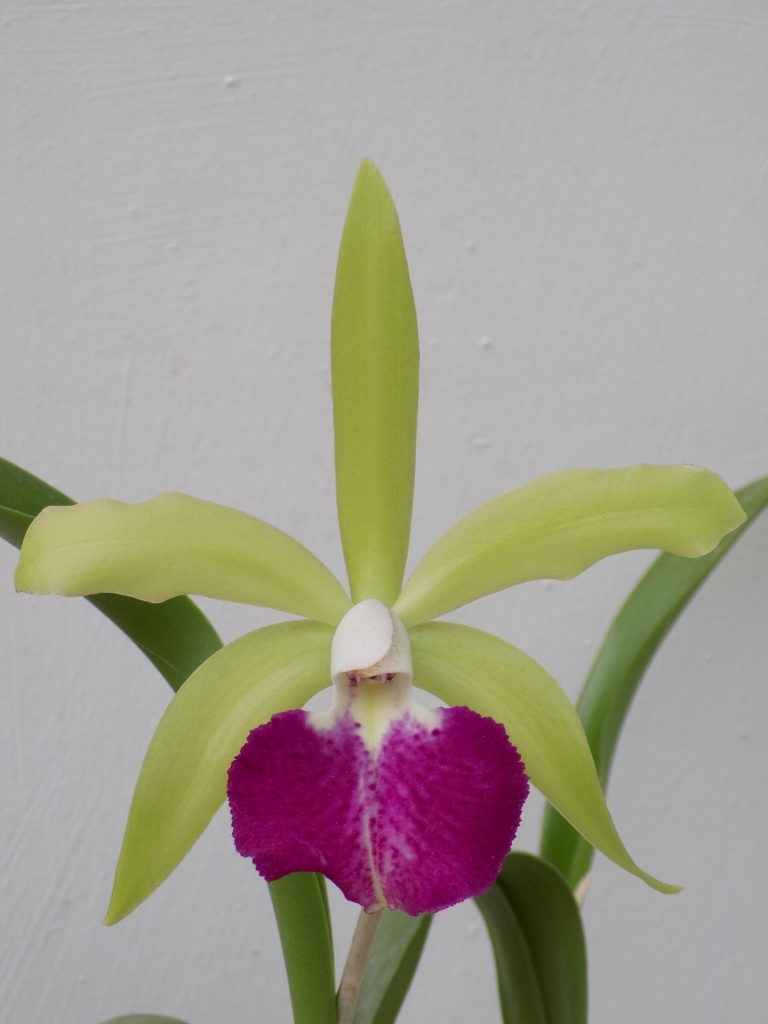 An orchid from the Botanical Garden in Rio
An orchid from the Botanical Garden in Rio
 An orchid from the Botanical Garden in Rio
An orchid from the Botanical Garden in Rio
In the Botanical Garden we also saw some fantastic trees, bald cypress (Taxodium distichum), the roots of which, when the trees grow next to a body of water, grow from the ground to the height of around half a metre in order to get oxygen. In other words, the roots grow contrary to the usual, i.e., they grow upwards and out, and not downwards and into the ground.
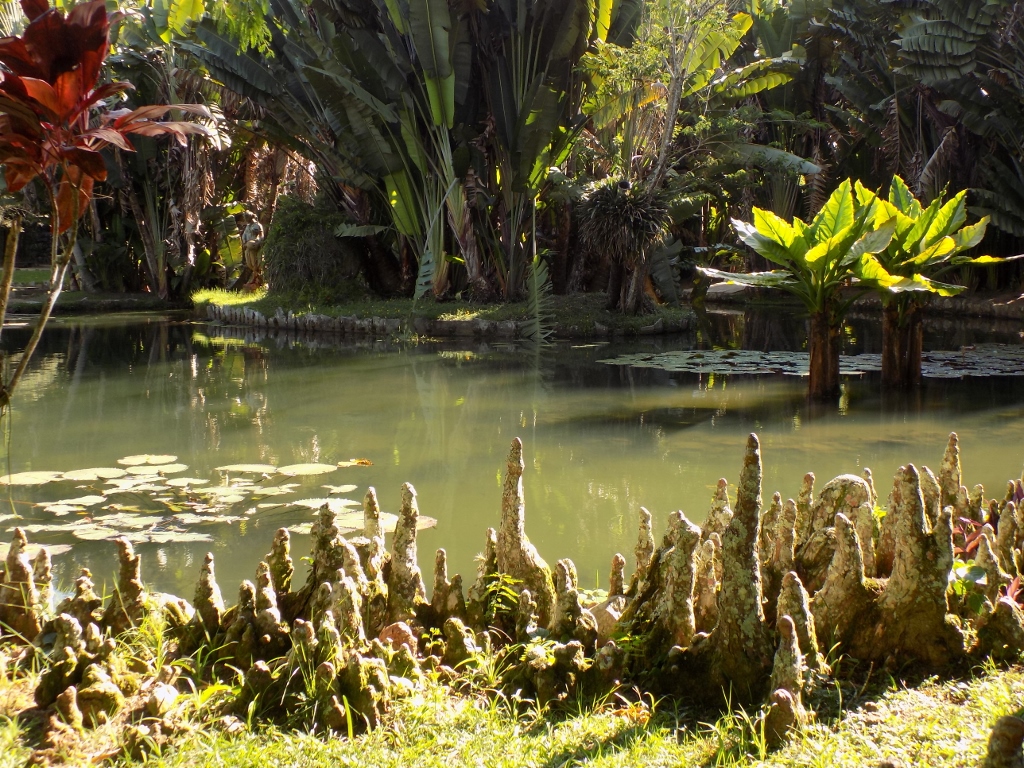 Details from the Botanical Garden; the roots of a bald cypress are in the foreground
Details from the Botanical Garden; the roots of a bald cypress are in the foreground
From the Botanical Garden, we often saw the statue of Christ the Redeemer which is located on the top of mount Corcovado. The statue is turned in such a way that Christ watches at the centre of the city, which means that we saw it from the back from here, but we did not mind this in the least.
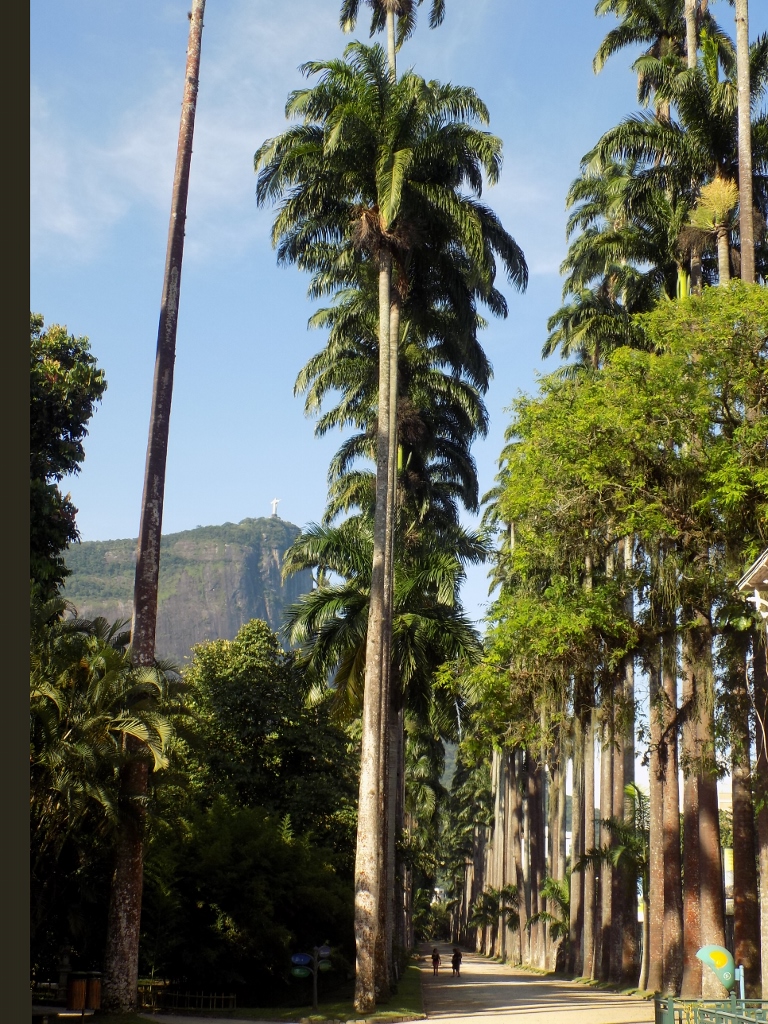 A detail from the Botanical Garden: the statue of Christ the Redeemer is on the top of the mountain on the left-hand side
A detail from the Botanical Garden: the statue of Christ the Redeemer is on the top of the mountain on the left-hand side
And then our walk took us past an incredibly interesting tree. Its name in English is cannonball tree (Couroupita guianensis). The tree itself is a “standard” one, but its fruits are certainly not. It is clear from their shape why the tree got its name.
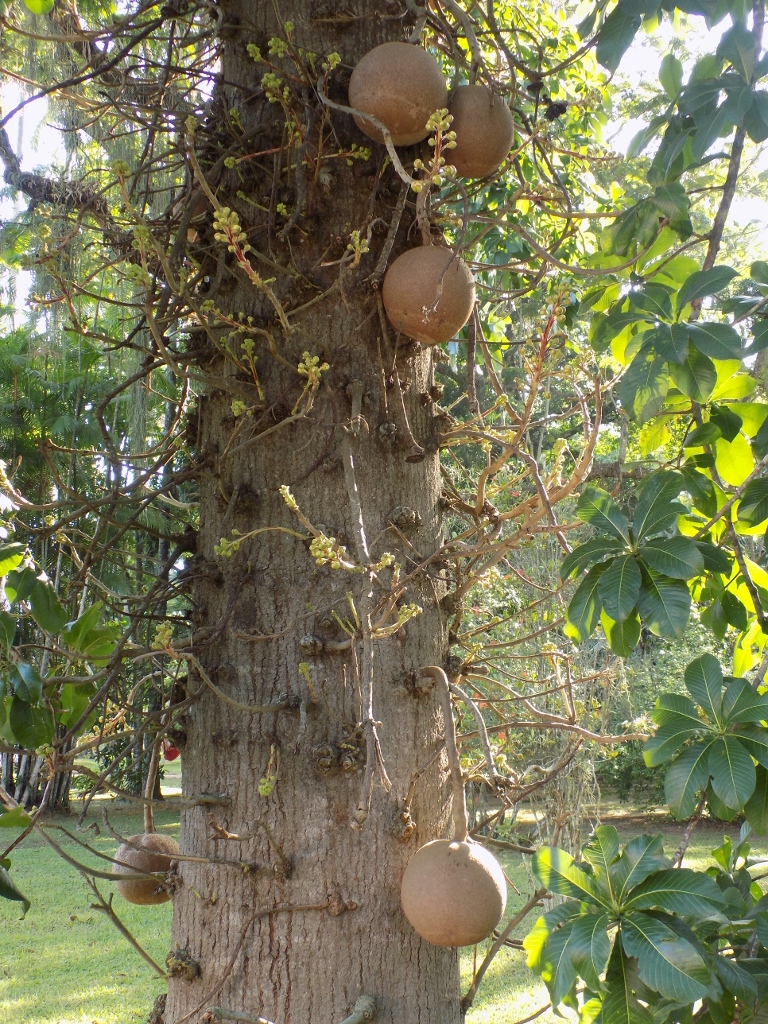 Fruits of the cannonball tree
Fruits of the cannonball tree
And yet, the most amazing were its flowers – incredibly delicate and of a completely “weird” shape.
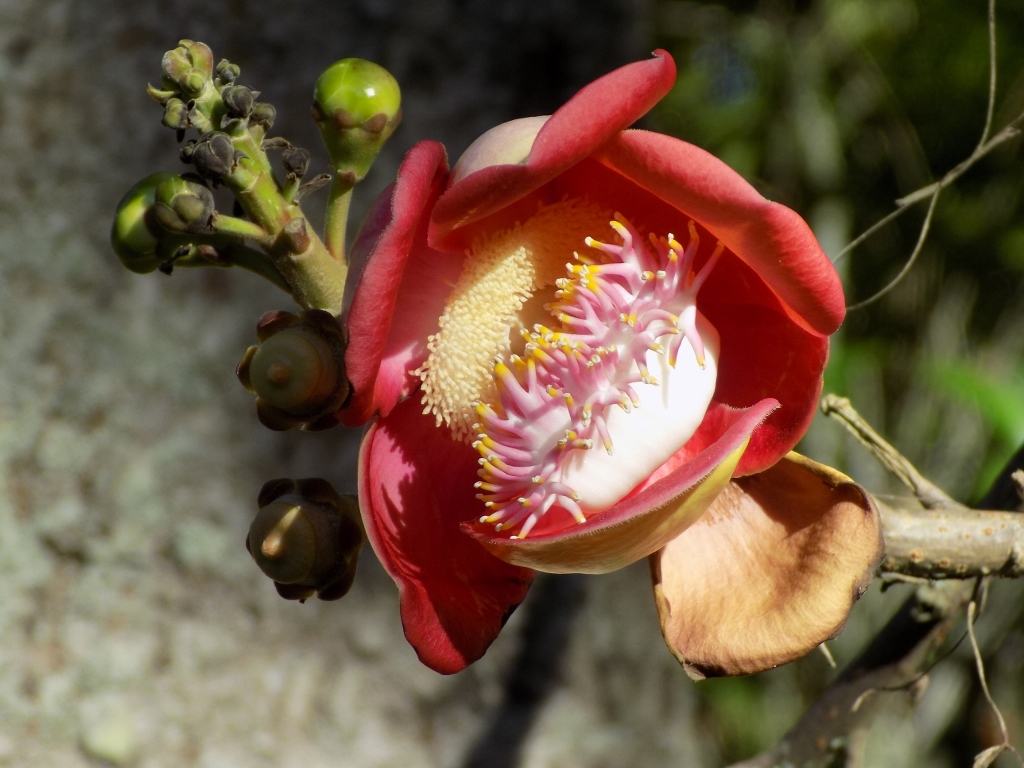 The flower of cannonball tree
The flower of cannonball tree
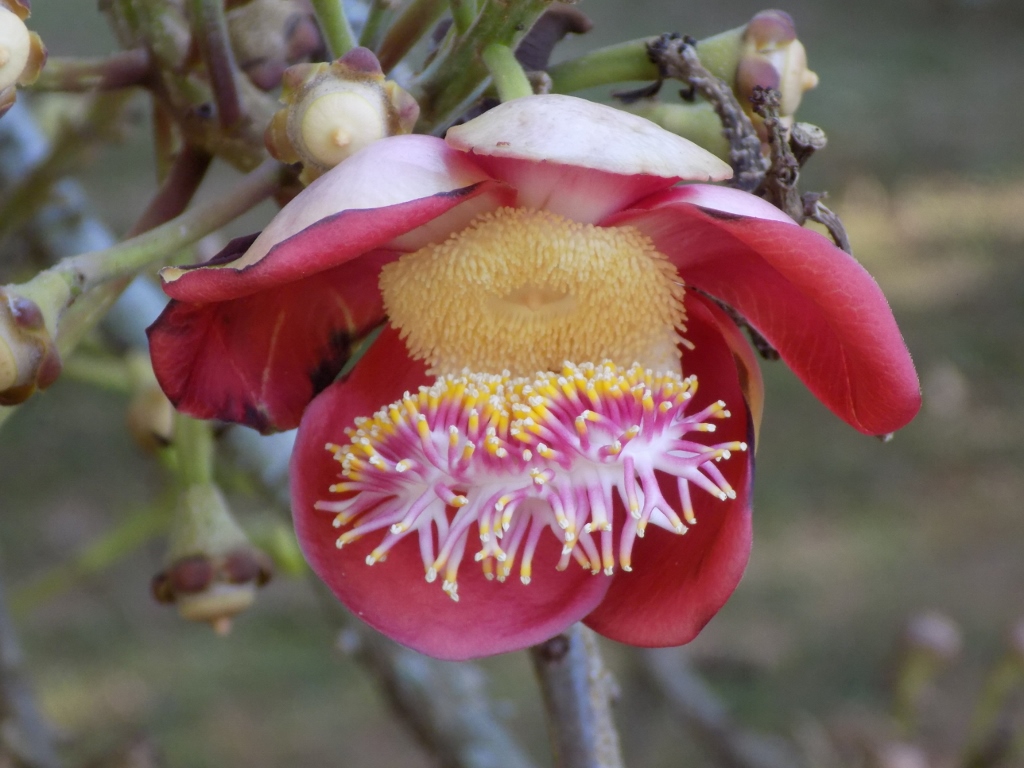 The flower of cannonball tree
The flower of cannonball tree
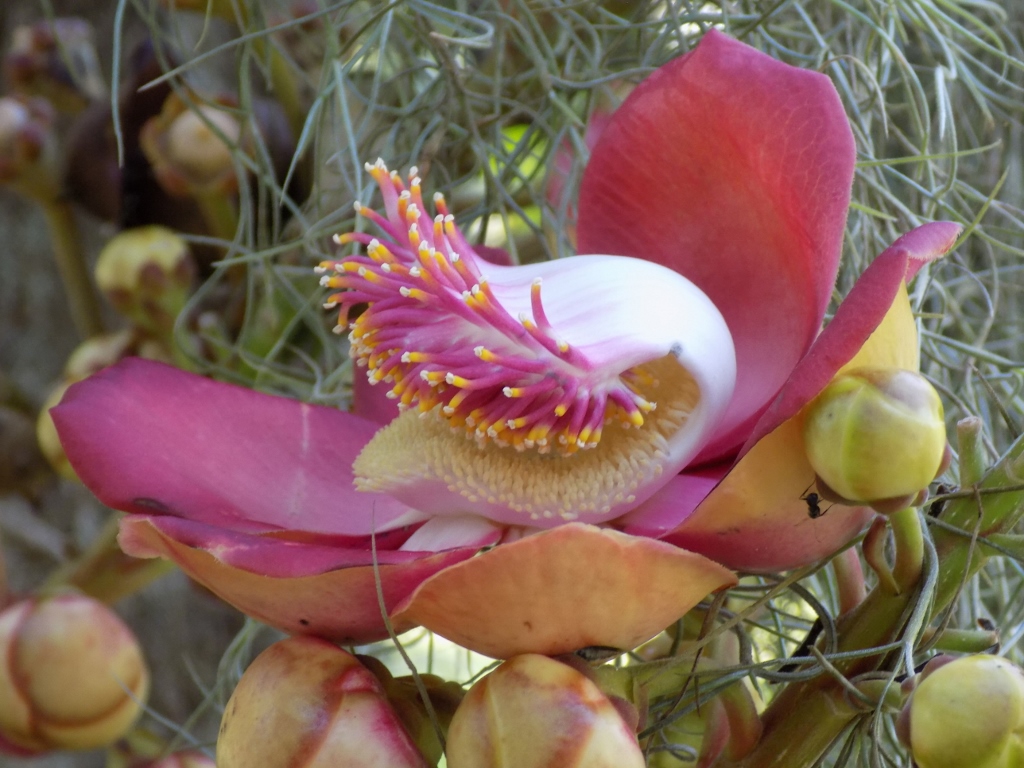 The flower of cannonball tree
The flower of cannonball tree
After we had finished with our visit to the Botanical Garden, we walked slowly to the nearby salt lake or rather a lagoon, Rodrigo de Freitas Lagoon, and walked along its shore for a little while. The lagoon was used for the canoe sprint and rowing events at the Olympic Games held in Rio in 2016 and it is also known by its huge Christmas tree that floats on its surface in the period around Christmas and New Year. The tree is even in the Guinness Book of Records as the biggest floating Christmas tree in the world. If that matters at all. It is lit in the evening and this is a particular event, but we certainly had no intention of waiting for the night to fall, since by this time we were very tired and just wanted to go back to our room.
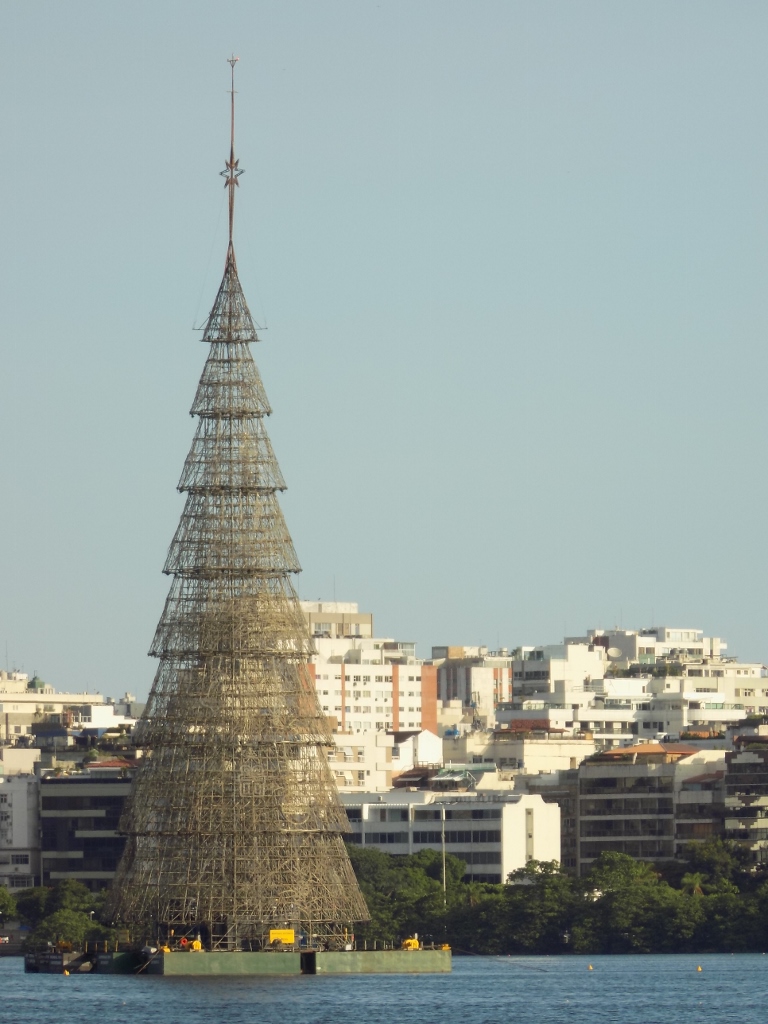 The floating Christmas tree on Rodrigo de Freitas Lagoon
The floating Christmas tree on Rodrigo de Freitas Lagoon
Still, since our hotel was so close to Copacabana, we walked a little along the beach and wetted our feet in the water before going to dinner.
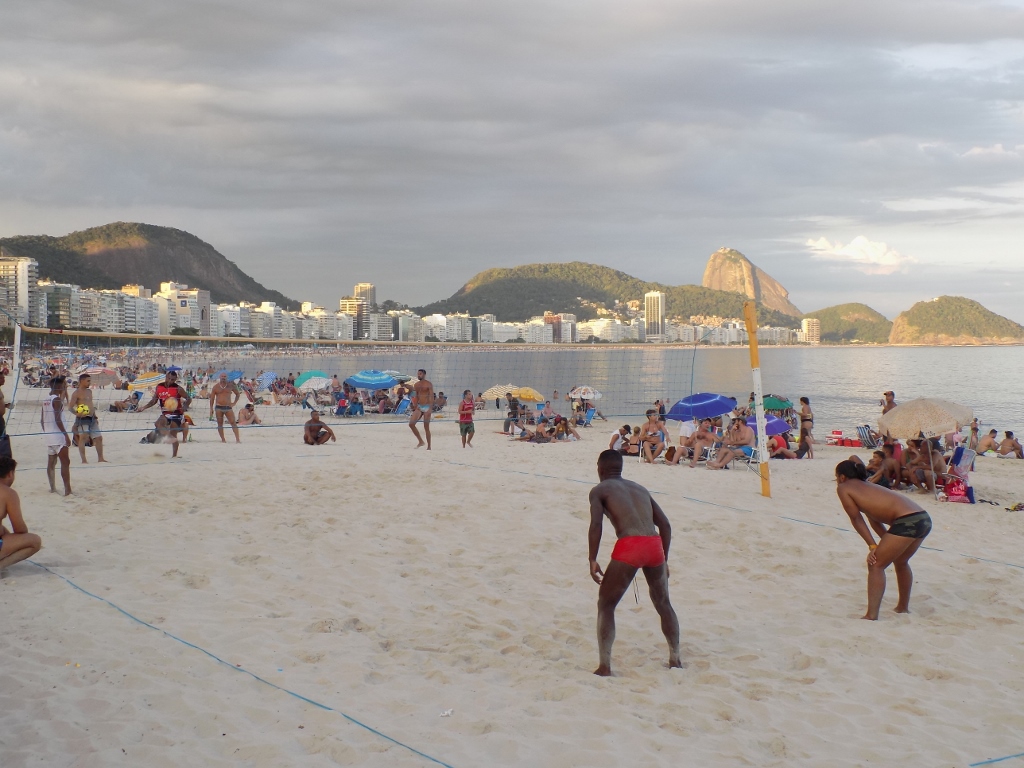 Beach sports are very popular in Brazil
Beach sports are very popular in Brazil
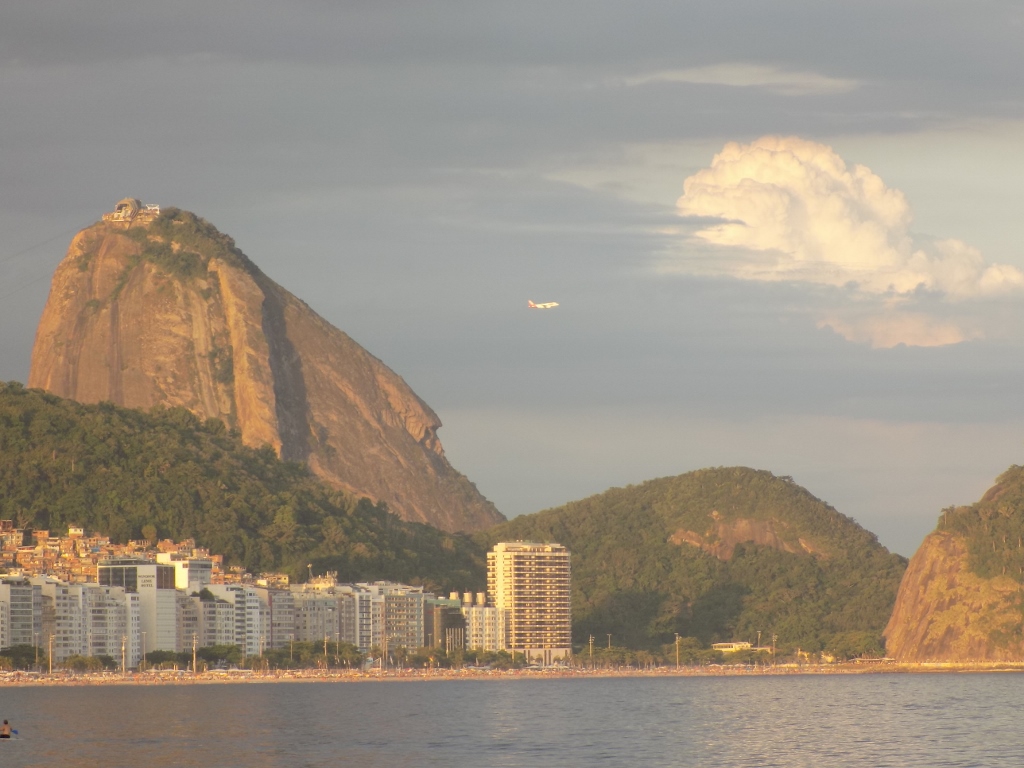 View at Sugarloaf at the moment when a plane flies by
View at Sugarloaf at the moment when a plane flies by

And then we finally went back to our room. It was good to take a shower again and go to sleep.
The following morning I first went to the hotel’s rooftop in order to take photos of the view. I had to stand on my toes in order to get as little of the neighbouring roof as possible, but I still managed to take a photo of Copacabana and Sugarloaf.
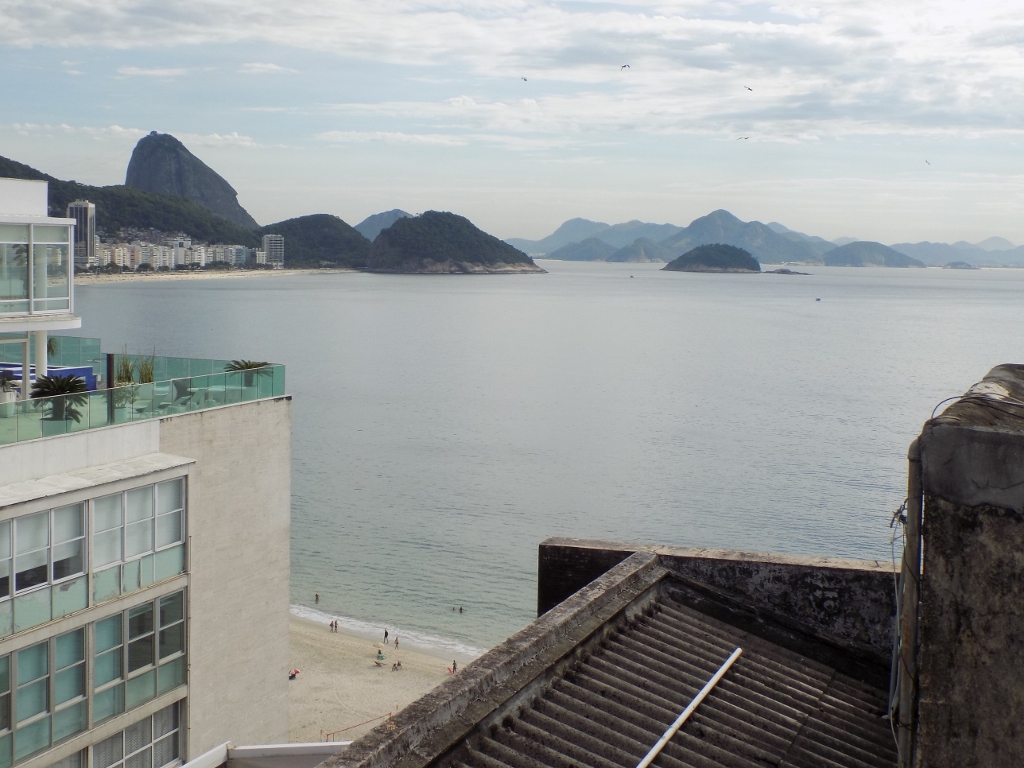 View at Copacabana and Sugarloaf
View at Copacabana and Sugarloaf
I also took a photo of the relatively close favela that rises along the slope of the hill in the background of Copacabana. Later I posted the photo on social media joking with my friends that there is a room to rent with a view at Copacabana. Nobody responded and I really wonder why.
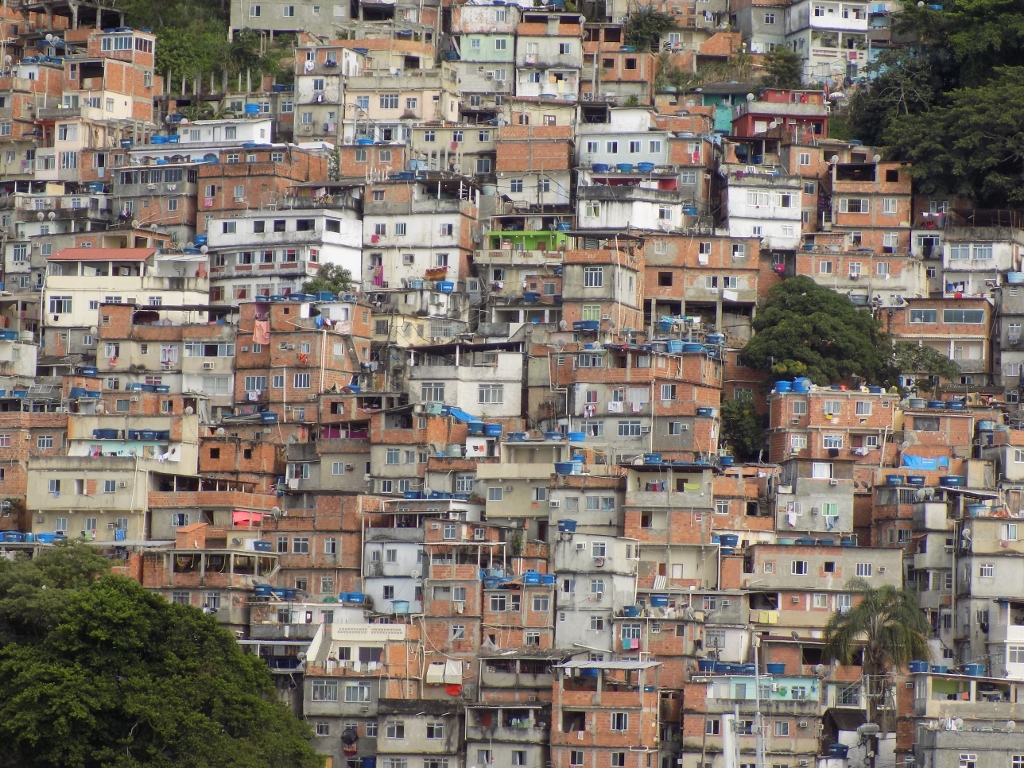 Favela above Copacabana
Favela above Copacabana
My original plan was to go for the sightseeing of the centre on the first day, but here on the spot we agreed to let things move at a slightly more laid-back pace. So, after an excellent breakfast when I started with my devouring of wonderful fruits, we first asked at the hotel and then we caught a bus that drove towards Botafogo quarter, but also passed close to the place we were actually interested in. When entering the bus, we asked the driver if we could take that particular line and he said we could, and when we got to a crossroad with a street leading to peninsula Urca, he stopped the bus outside a formal stop and shouted that we should get off there. A few passengers helped him out in this shouting in order to make sure we got the message, we obeyed, of course, and thanked them. That’s the proper public transportation!
Urca is a peninsula and one of the city’s quarters. We headed there in order to visit its most famous part – Sugarloaf mountain. To start with, let me explain where the name comes from. I must admit that I did not find it clear at first, but then I looked into it and clarified the whole thing. Namely, until around mid-19th century, at the end of its production sugar was poured into moulds that had the shape of an elongated cone. These sugarloaves were very hard and then over time sugar started to be sold as granulated or in cubes. Since this hill, i.e., a huge rock has precisely the shape of an elongated cone when seen from the shore, it was named appropriately.
Nowadays, the top of Sugarloaf may be reached by cable cars. I’m saying this using plural, since there are two sets of them. One leads to the top of the first elevation called Morro de Urca, 220 m high, which stands between the foot and Sugarloaf. There one changes the cable car and then it takes you to the top of Sugarloaf which is 396 m high.
To start with, during the first leg of the journey up, it is possible to see Vermelha Beach, which means Red Beach.
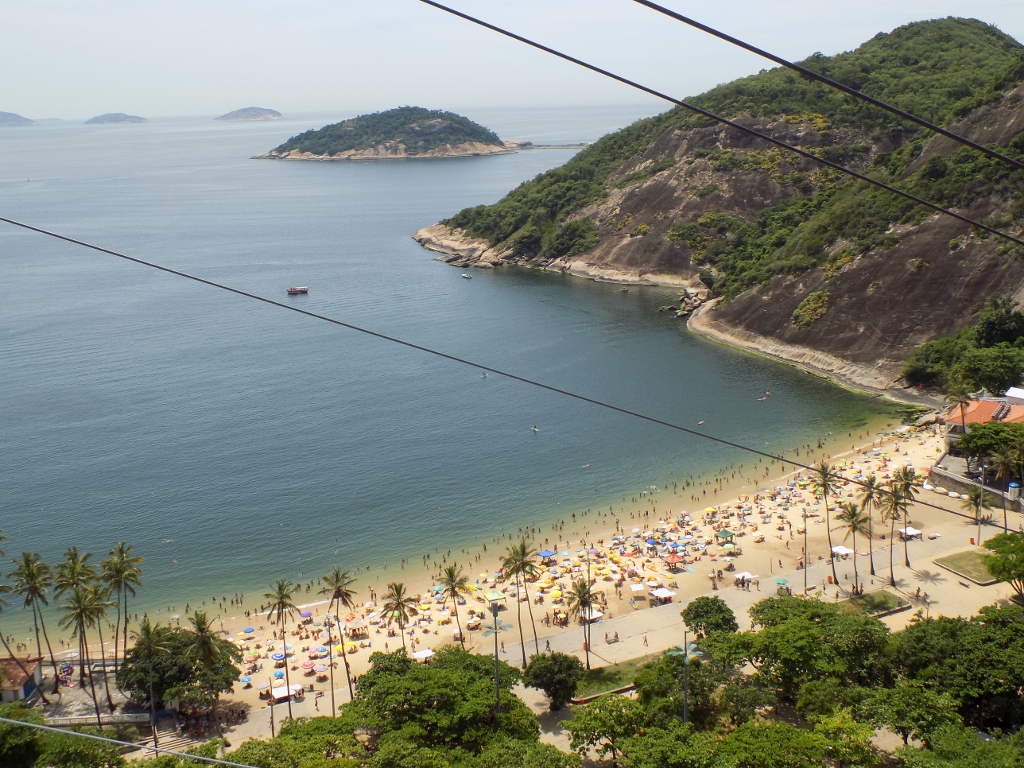 Vermelha Beach in Urca quarter
Vermelha Beach in Urca quarter
On Morro de Urca there are numerous shops and bars/restaurants, but there are also several view points from where there are stunning views at Rio and its numerous quarters.

We walked there for a short while, making numerous stops in order to be sure we did not miss out on some angle of view. It all seemed truly impressive. What delighted me additionally were scavengers that were flying in considerable numbers around Sugarloaf.
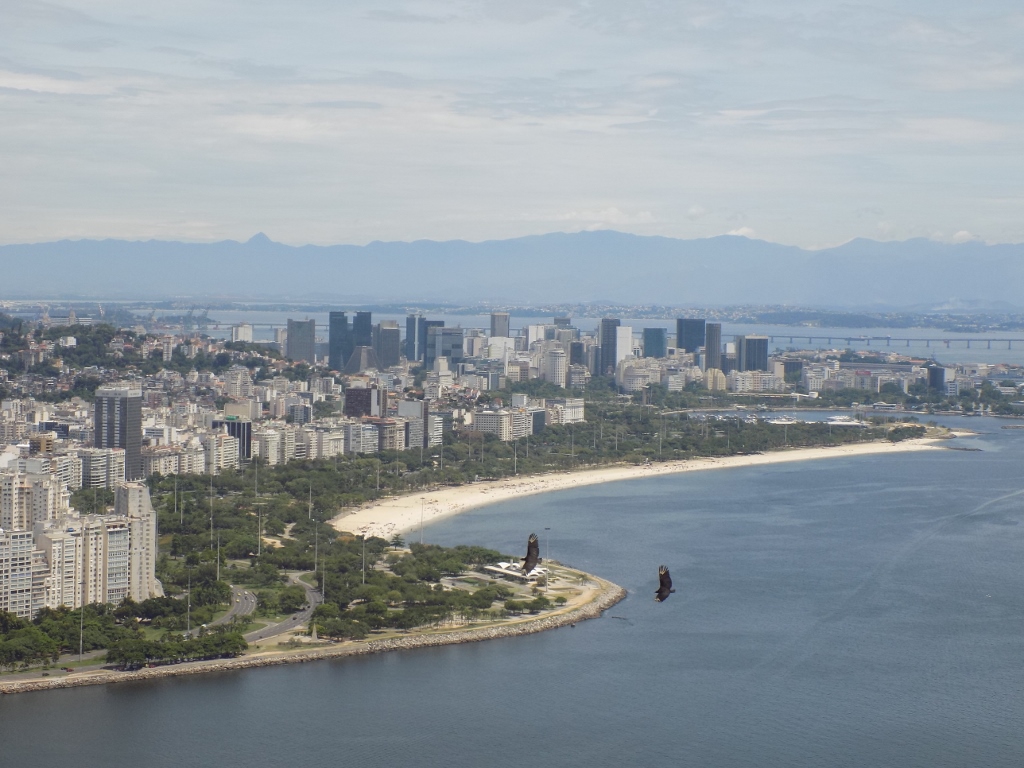 Scavengers and in the background Flamengo and Glória quarters
Scavengers and in the background Flamengo and Glória quarters
Then one moves onto the second cable-car system going up to the top of Sugarloaf. This is in fact a huge bolder that has this specific shape and it is one of the symbols of this city with amazingly beautiful position.
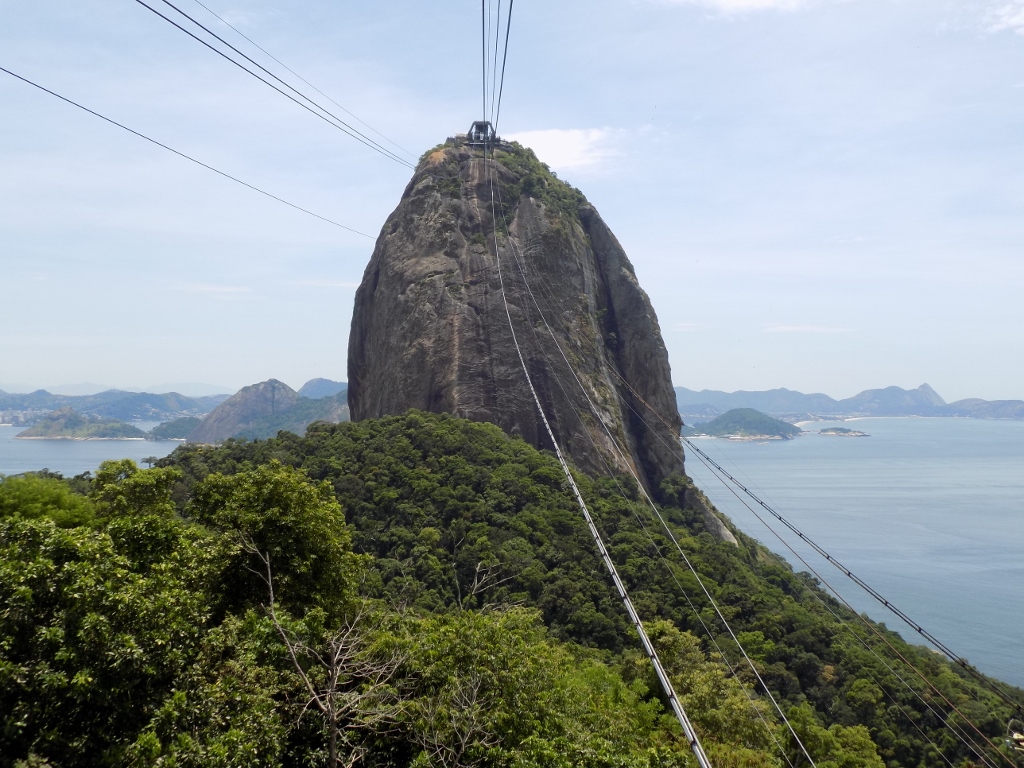 Going up to Sugarloaf by a cable car
Going up to Sugarloaf by a cable car
There are, of course, more view points from where one can admire the beauty of the city, its beaches and surrounding mountains.
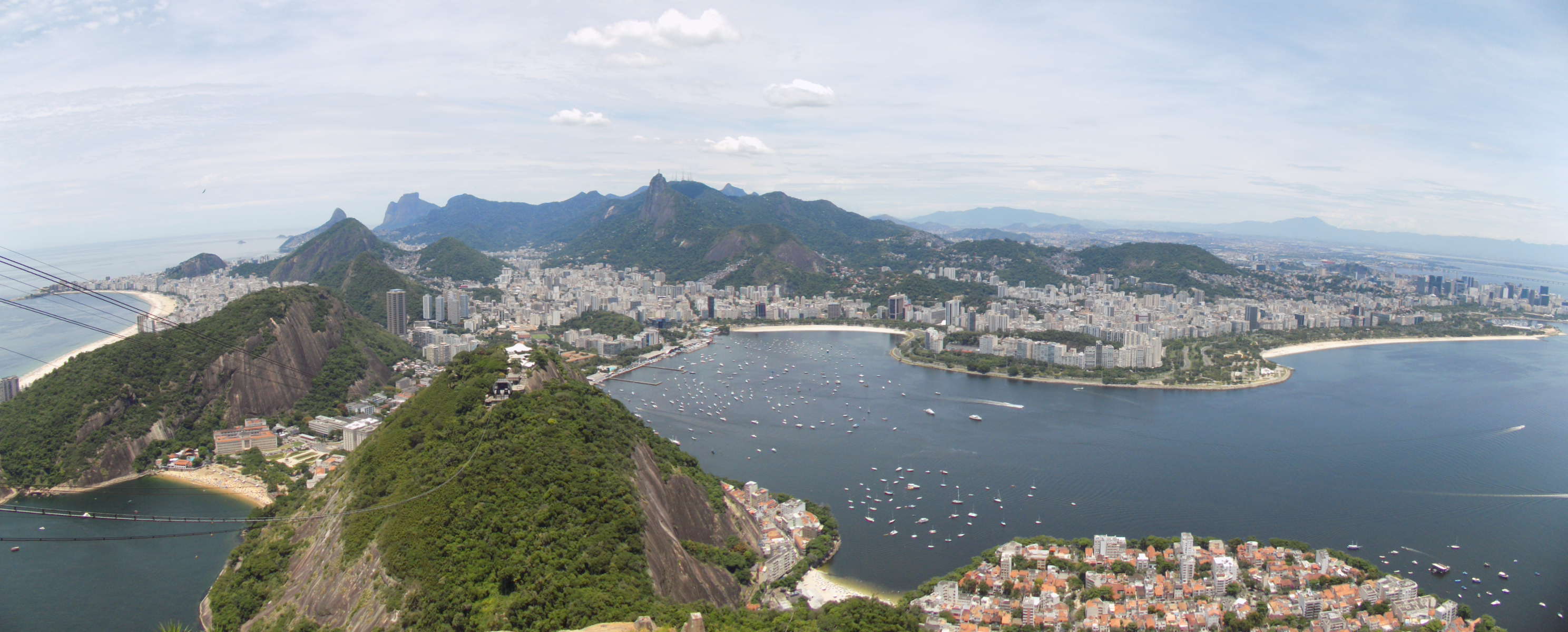
But, no matter how beautiful this was, at some point we wanted to move on. Before that, we did sit in one of the restaurants on Morro de Urca, had a refreshing drink and only then did we leave, since by this time we were hungry.
Still, when we got down to the flat ground, we first walked to the beach. Regardless of the heat, we did not plan to go to the beach in order to swim, so we just walked by and watched from the walking area other people on the beach and took photos, and then we caught a taxi in order to go to Botafogo quarter.
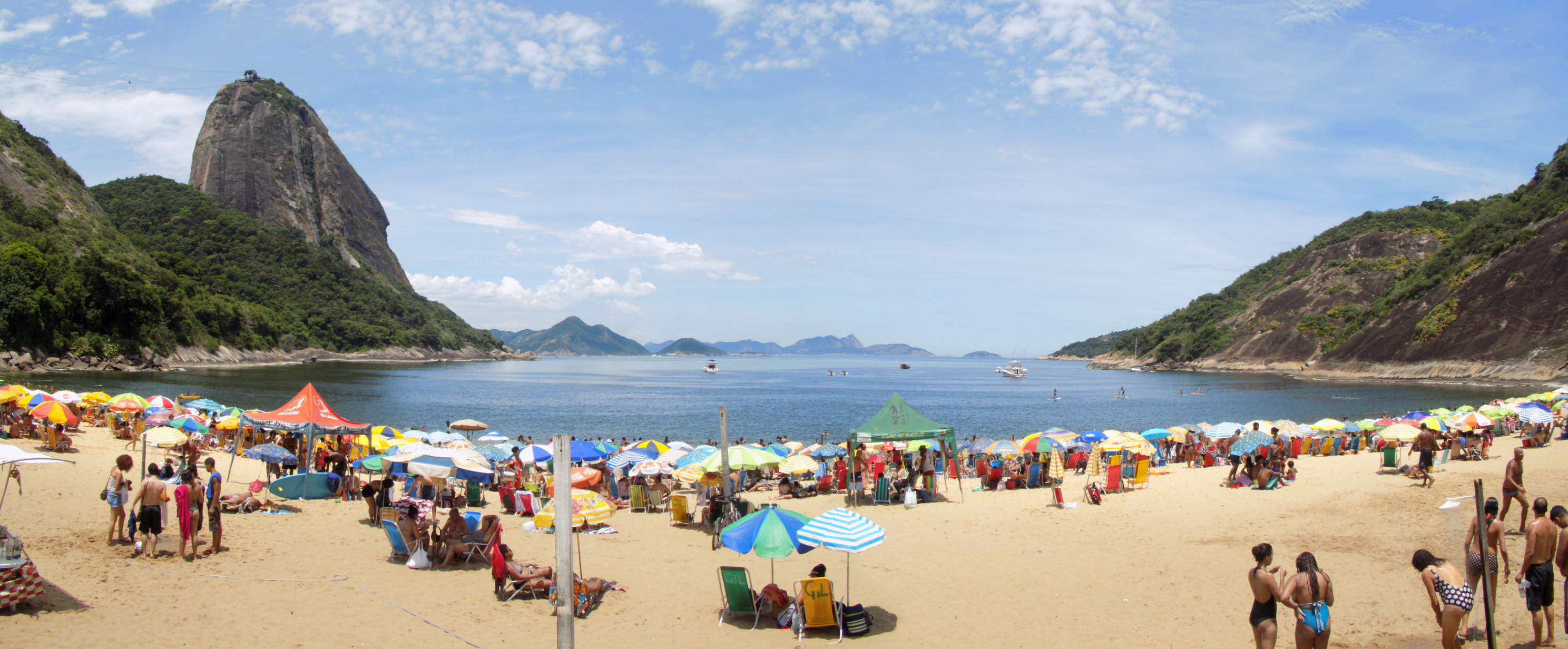
The idea was to go first to the central market of Botafogo quarter. There are several restaurants there, but the two of us decided on a restaurant that offered buffet with the food being paid for by weight. There were different dishes on offer, international and Brazilian, then we chose what we wanted, they weighed that on a scale, deducting the weight of the plate, and then we paid for the actual food.
Like always when buffet is concerned, offering all sorts of dishes, I stepped again on the overeating line, but I survived eventually.
So, after this good meal, we walked to the Museum of the Indian (Museu do Índio). This concerns the domicile population, living here before the arrival of the colonisers, as well as the people that belong to the tribes still living in their traditional way, mostly in Amazonia. The two of us were very interested in this topic, but unfortunately the museum was closed when we got there and thus we did not succeed in learning more about this whole matter.
Therefore, we continued walking around Botafogo quarter and from there we saw Santa Marta favela with its funicular. Still, following the advice given to all the tourists, we did not try to visit on our own this or any other favela for that matter. Let me first explain what favela is. This is a word in Brazilian Portuguese meaning an informal settlement. Officially, the first settlement of this type was created precisely in Rio at the end of the 19th century, but most of them in Brazil were founded during the 1970’s when there were internal migrations of the people from the poor rural areas to the big cities. Over time, these settlements have become notorious on account of a high crime rate, while the word itself, favela, spread around the entire world entering different languages. There is an exceptionally good film on the subject that should be seen by anybody who is interested in favelas and the life in them – City of God (Cidade de Deus), called like this after the name of a favela.
Concretely, favela Santa Marta is known from a completely different type of a video recording. This concerns a video clip for Michael Jackson’s song “They don’t care about us.” The video was shot on two locations, here in favela Santa Marta, as well as in the historical centre of the city of Salvador. This made Michael Jackson very popular in Brazil and we often came across his posters or murals on the walls of buildings.
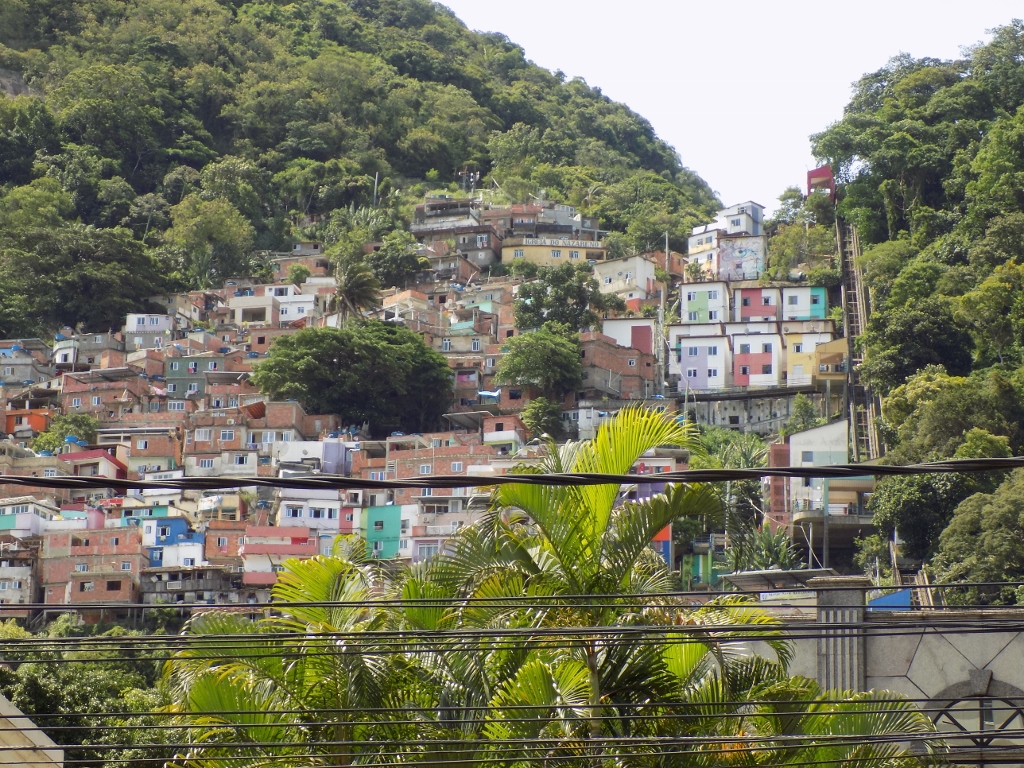 Favela Santa Marta
Favela Santa Marta